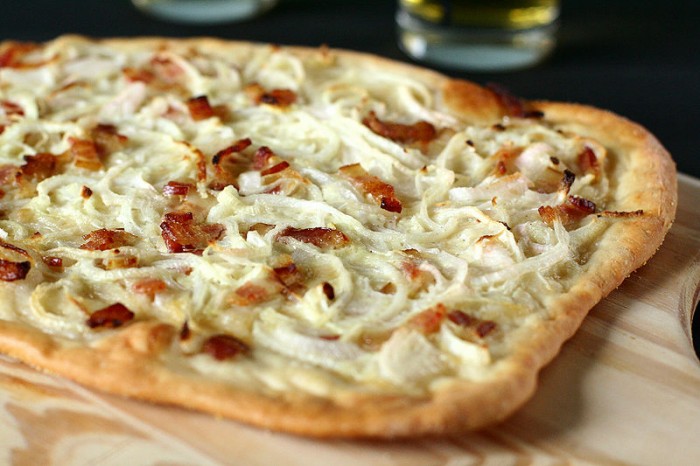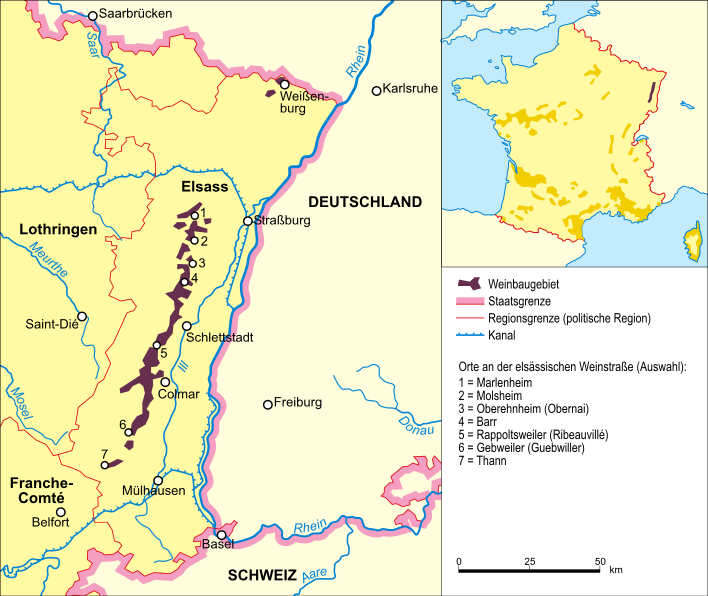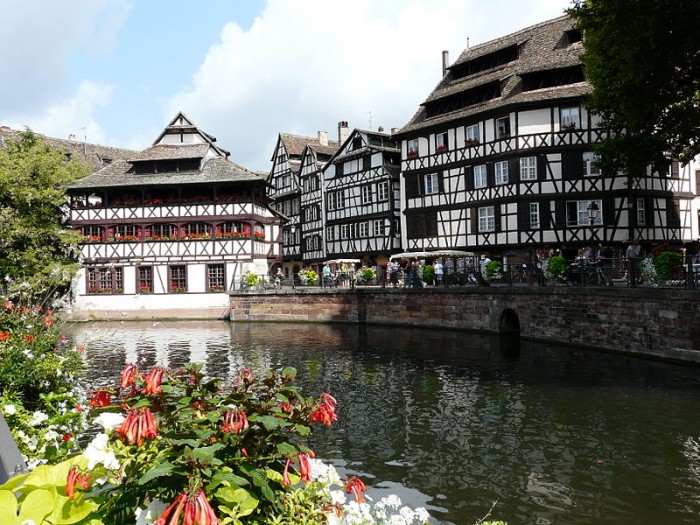Guest Post: A Tour Around Alsace.
Dear readers: The following article is a guest-written post about a place I’ve been to and loved — The Alsace region of France. Since you know I have this terrible habit of quitting my “real” jobs, this post is an example of a way I am monetizing this blog without introducing a bunch of pop-up videos and floating ads and all of that junk. When a post is guest-written, I will always let you know in the title, and I will do my best to make sure the post is interesting and informative. I think this one definitely fits the bill.
What I remember most about the region is the city of Strasbourg, where I stayed with a friend from the U.S. and her father, who lived there, for nearly two weeks. We’d wake in the morning and eat fresh French bread from the corner bakery slathered with Nutella. I had to shower kneeling in the crumbling brick bathroom of his centuries-old apartment, and then we’d travel the modern electric tram past intricately carved Gothic cathedrals and the stunning half-timbered building sector known as Petite-France.
The memory of my hands-down favorite dish of the region, Tarte Flambées, still makes me salivate. If you ever go, you must not leave without trying one. Or six.

A tarte flambée, typically topped with crème fraîche, very thin onions, and lardons. (source)
Enjoy the guest post!
A tour around Alsace.
Alsace is a region located in the east of France. The region is known for its small towns, its countryside and its monuments.
Wine tours.
The Alsace Wine Route is one of the region’s main attractions. The route is around 170 kilometres in length and there are many vineyards along the way. Most vineyards offer tours and wine tastings, and some tours include cheese tastings.

Alsace wine region. (source)
Traditional Towns.
There are several traditional towns around the region, including Obernai, Thann and Wissembourg. Wissembourg is located on the border and is part of the Natural Regional Park of Northern Vosges, where visitors will be able to enjoy walks, cycling and hiking. The city is known for the Saint Pierre et Paul Church, one of the region’s largest Gothic buildings, and the Stanislaus Palace, which is now the City Hall.
Thann is a town known for its architecture and its many cultural landmarks. Its Collegiate Church of Saint Thiébaut is another of the region’s Gothic buildings. The ruins of the Engelbourg Palace are one of the city’s main attractions and are known for their views of the Vosges peaks.
Colmar is a historical town. Visitors will be able to roam the streets and see churches, fountains in squares and museums. There are several museum dedicated to regional history, and one of the largest museum is the Natutal History and Ethnography Museum.
Mulhouse is another cultural town. The Temple Saint Étienne is the city’s Gothic cathedral. This town is known for its Botanical and Zoological garden, where visitors will be able to see many local animals, birds and plants.
Several of the region’s villages are known as the Plus Beaux Villages de France. These villages include Eguisheim, Hunawihr and Hunspach. Another set of villages are the Villes et Villages Fleuris, which are the product of a campaign to improve the image of rural towns, which are known for their exterior decorations.
Strasbourg.
Strasbourg is the Alsace department’s largest city and its travel hub, with an airport and a train station. The Gothic Cathedral of Notre Dame is located in the centre of the city and is the city’s symbol. The Grande Île is the historic city center, an island located on the banks of the river. The Petit France quartier is a neighbourhood located near the river, and is known for the timbered houses that were built on the shores of the waterway. Another main landmark is the Ponts Couverts, a medieval bridge. The Palais Rohan is a large building where the Archaeological Museum, the Decorative Arts Museum and the Fine Arts Museum are located. There are many other museums in the city, including the Alsatian Museum and the Historical Museum.

Half-timbered houses in Petite France, Strasbourg. (source)
Castles and Museums.
The Haut Königsbourg Castle is located on a hill in Orschwiller. The castle has views towards the Alsatian plains. Tours are organized around part of the castle’s rooms. Visitors will be able to walk around the medieval gardens. Ouvrage Schoenenbourg is an ancient fortress that is part of the Maginot Line. Guided tours are organized around the fortress.
The Alsace Ecomuseum is a museum with 70 traditional country houses from several regions in the country. Visitors will be able to enjoy tours around the houses, try typical food and visit the carousel exhibition.

Comments
Take me there now!
I have been craving tarte flambées for 8 years now… might be time for a re-visit!
Sign me up! I’m quite jealous.
I’ve been intrigued with Alsace since I read a book a couple years ago called “Wine and War: The French, the Nazis, and the Battle for France’s Greatest Treasure”. It shared some interesting stories about WWII and how the occupation affected the winemakers in France, including the Alsace.
Sounds like an interesting book! Strasbourg actually used to be a German city (hence the German name), but I think it’s switched back-and-forth a couple of times during Europe’s tumultuous history. Fingers crossed we actually finally get orders this summer!!!
I love your description of showering – we spent some time this past summer with family in France and Germany learning how to hand-held shower – WTF! I can still taste our flambée from Strausbourg with the tiny onions floating on the créme fraíche. Thanks for the bite!
Yes! I completely forgot to mention that the shower was hand-held. Definitely hard to get used to. :) And you had the flambée? Did you love it as much as I did??